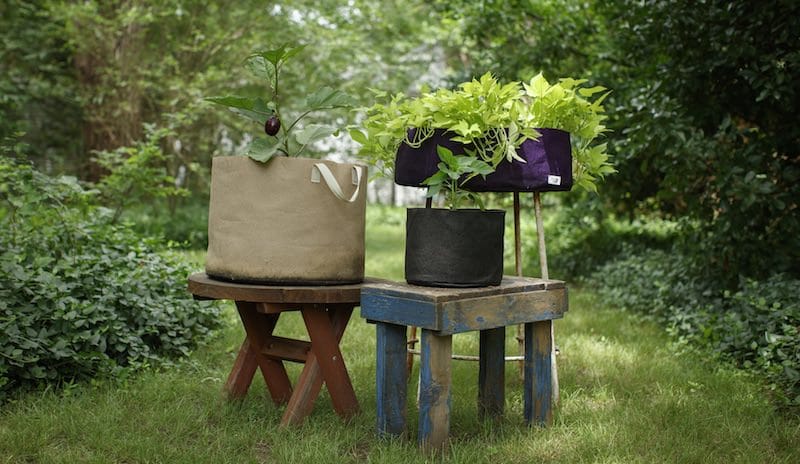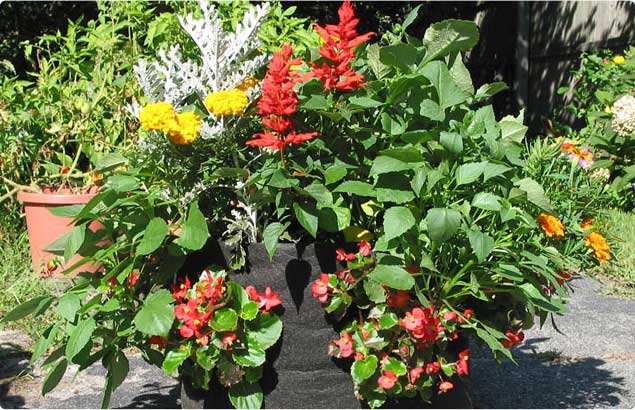Key Selling Points for Smart Pots: The Best Pots for Plants
As a consumer category, plant pots aren’t fundamentally different from any other durable good. When comparing products, customers seek maximum value — the biggest bang for their discretionary buck. And when it comes to gardening containers, maximum value unquestionably resides in Smart Pots. Let’s break down key points of differentiation that make Smart Pots the best pots for plants.
Room to Breathe:
Fabric Pots vs. Plastic Pots
Let’s start with the basics. Plastic pots have been in circulation since plastics became ubiquitous in consumer goods. In other words, they’ve been around awhile.
Plastic pots provide two distinct advantages. Namely, they’re cheap and lightweight. And that’s where the good news ends. Plastic pots have several distinct downsides that make them vastly inferior to fabric pots.
Start with moisture
As Isaac Newton famously observed, what goes up must come down. That goes for water flowing through soil, too. Water deposited at the surface is drawn by gravity to the base of the pot. Even if they have drain holes, plastic pots tend to let water accumulate near the bottom of the vessel. Pots without drain holes (and those sitting in drip trays) are even worse off.
That’s because overwatering is the single biggest killer of houseplants. Overwatering causes root rot, in part by starving roots of the oxygen they need to survive. When they’re drowning in oversaturated soil, roots can’t respire. So they die and biodegrade.
Overwatering invites a host of insect, bacterial and fungal pests that attack roots and make life miserable for plant owners. Ever suffered through an invasion of pesky fungus gnats? If so, overwatering was almost certainly to blame.
Now let’s talk about root circling. This is the real knockout punch in the battle of fabric pots vs. plastic pots. In a plastic pot, plant roots will eventually reach the boundary of the container. Once there, they begin circling the vessel in search of oxygen-rich soil. There’s just one problem. Plastic pots aren’t oxygen-permeable. So the roots grow to unhealthy proportions, getting tangled in the process. The result is a root-bound plant that is stressed or dying from lack of nutrition.
The Argument for Fabric Pots
Now, let’s examine why fabric makes the best pots for plants.
First up is moisture control. Fabric pots are permeable, meaning that water and air can pass into and out of the container. When water enters from the top, it permeates the soil and transpires from the sides of the pot. Excess water that reaches the bottom flows through the fabric and exits the vessel. This prevents excess moisture from building up in the container. Goodbye, root rot and overwatering.
Next up, oxygenation. As we learned before, roots need abundant oxygen to thrive. In fabric pots, oxygen flows through the container from all sides. When roots reach the container boundary, they sense optimum moisture and oxygen levels. The result is rather astounding.
When roots approach the edge of a fabric pot, they form dense, finely branched structures. Notably, they do not circle or become root-bound. The process, known as “air pruning,” produces fine root structures that are perfect for absorbing oxygen, moisture and nutrients. The result is not only a healthier root system, but a dramatically healthier plant.
Flowers grow more abundantly. Vegetable yields are off the charts. Plants grow bigger, denser and stronger. When comparing fabric pots vs. plastic pots, there really is no comparison.
Smart Pots: The Original Fabric Pot
Fabric containers were invented in the 1980s by High Caliper Growing of Oklahoma City, Oklahoma. Their flagship fabric container, known as the Smart Pot, is the world’s top-selling fabric pot. Over the years, the market has become flooded with knock-off products. So how do Smart Pots maintain their advantage? By being the world’s best pots for plants.
Here are just a few of the factors that put Smart Pots over the top:
- They’re free of harsh chemicals and dyes that could leach into the soil.
- They’re 100% BPA-free.
- Every Smart Pot is made in the United States for unmatched quality control.
- Smart Pots are scientifically designed to release heat, keeping roots healthy.
- Smart Pots’ fabric is the perfect thickness to facilitate moisture control.
- They are incredibly durable, lasting five years or more under normal conditions.
- Smart Pots provide consistent quality from order to order, unlike foreign competitors.
- Smart Pots are a scientifically proven product, and the world’s original fabric pot.
When you factor in plant health, vegetable yields, durability, safety, and quality, Smart Pots are the planet’s undisputed best pots for plants. At retailers around the world, customers ask for them by name. Put them on your shelves today and watch Smart Pots sell themselves.







i have several Smart Pots and Love them but now that we are getting lots of rain in SoCal and my SmatPots are sitting flat on my concrete patio the bottom is staying very damp and concerned about root rot…can that be something I should be concerned about??